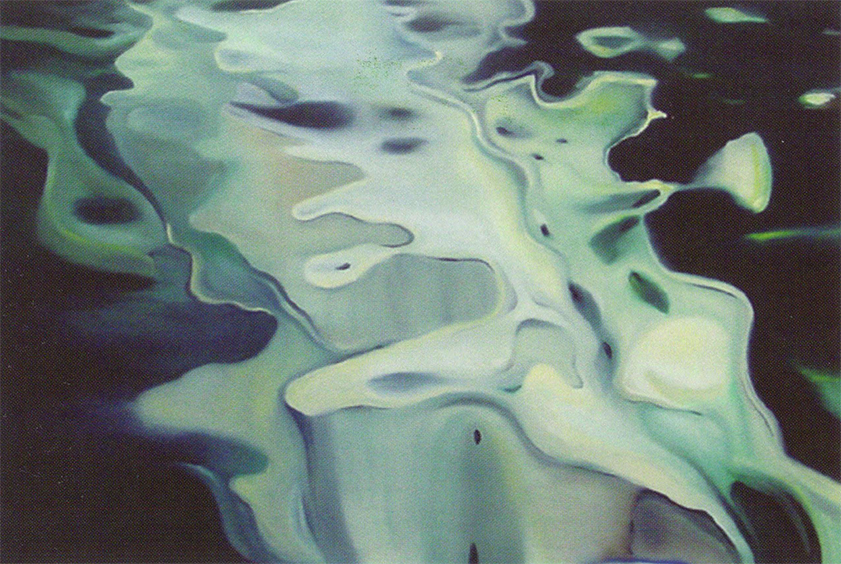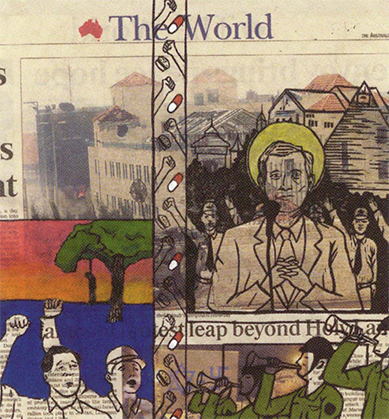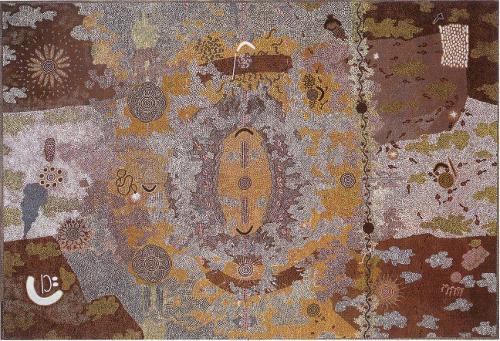
Every year we are drawn to the Canberra School of Art graduate show. What are we looking for? The new? Predictably we look for new expressions of old techniques or new interpretations of classic themes but, more acutely, insights into what most preoccupies today's artists.
There is a lot to see. At the core is the exhibition in the School of Art Gallery where one work of each graduate is exhibited and then in each workshop you can find each student's body of work. Canberra's workshops are ceramics, glass, gold and silversmithing, painting, photomedia, printmedia, sculpture, textiles and wood.
The overall impression is of spirited variety. There is no one obsession and some fresh, idiosyncratic approaches. However, there are discernable themes.
Several students reflect on the horrendous Canberra fires: Rebecca Hanrahan's Ash prints or Phillip Harris' Distressed stool in charred wood. Emily Christian in the Textiles workshop studied irrational terror through the mythical character Baba Yaga. Bernie Slater, self-styled official War Artist in the War on Consciousness, created scriptures and teachings in hectic lino print and collage to decry the nature of consumer culture.
Personal histories and national roots are a continuing theme, explored by Christina Costardis' In Search of My Roots relating to her Greek ancestors and traditions, Maija Kins' Tradition in Transition series using Latvian Mittens as leitmotif, and Aki Nishiumi in her Cross culture series.
The environment is more often observed than argued. Two strong printmakers use woodcut: Basema Mahdi's River Oak is a meditation on Uriarra Crossing on the Murrumbidgee River and Jill Loupekine details the slow weathering of rocks in Rites of Passage. Melissa Egan works with the material of the Lachlan River. Natural forms, Petals and Lotus leaves are delicately handled by Lucette Aubort using glass and cast crystal. Christopher Harman's lumpy geode forms (ceramics) are a satisfying material play with geology.
On the lookout for the light hearted: David Wills series of c-type photographs of op-shop-found hand-knitted Bananas in Pyjamas, B3 make a diverting line-up as each clearly has its own personality, beyond the formulaic. More poetic than light-hearted, the works of Madeleine Donovan nevertheless lift the spirit. Through life as a gymnast she is absorbed by the interplay of balance, intimacy and trust. These blend in a delightful series of photographic images involving pairs of balancing people in the landscape, in a workshop, a library, at home.

Where is history? One exception is the work of Angela Kane, who, in researching 18th century French furniture, recreated the spirit in simple, subtly detailed rock maple bed and writing desk.
In sculpture, recycled material informs the best work. The Personal Bubbles of Chloe Bussenschutt are made of recycled tents. These ponder the thought that 'escapism is not a flight from reality; it creates&' They also hint at the survival wear of Lucy Orta.
There is one interactive performance and installation by Blaide Lallemande, that entailed monitoring the heartbeat of family and friends. This matches her other work interpreting the rhythms of the body as an aid to locating 'a sense of presence and stability.' And video? There is one only, by David Mills.
The three workshops that sit most closely at the interface between workshop and the world are wood, gold and silversmithing, and ceramics. Wood celebrates the two extremes with Christo Kubler using digital modelling to create a sophisticated white lacquered chest, a production line piece and Sam Wilson making a blackwood writing desk without power tools, abrasive papers or non-natural finishes. In between, the stack chairs of Niklaus Rubenis are impressive. Gold and silversmithing students are inspirational in their reverence for material and design, in particular Rohan Nicol's Night Porter-Bag, a social statement, and Bank Thamsongsana's anodised aluminium brooches, spiked with popular culture. In ceramics the pure forms of Mollie Bosworth (using southern ice porcelain and Kate Stephens (using porcelain clay and slips, soda/wood fired and polished) develop a fine tradition of that workshop.
Painting is still the largest workshop, but this year there appeared a wider gap between honours and pass students. Such works as Waking this Morning by Suzanne Moss, the diaristic paintings by Joanna Howard, and the elusive quality of light in the landscape in the work of Lex Beardsell, are all promising.
Overall there seems to be less theory, history or text-driven work than previous years. The influence of the Canberra School of Art's Exchange Studies and overseas links particularly in glass, gold and silversmithing, printmaking and ceramics are telling. These are vital not only for the exchange of ideas but also for providing opportunities for these graduating students to work overseas.












